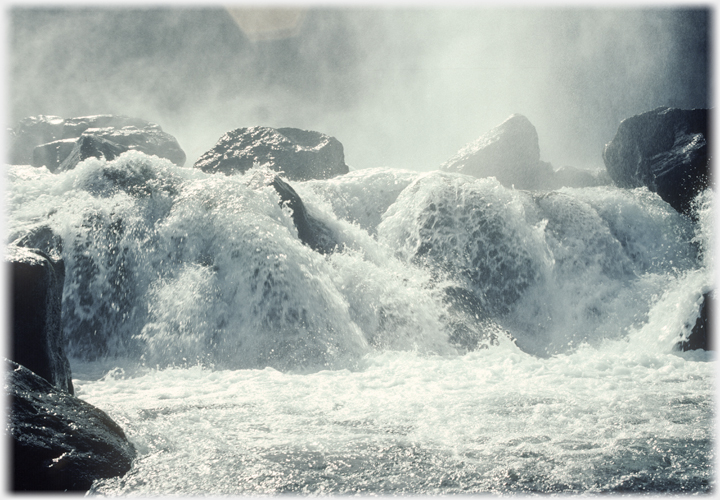
Flux
The river where you set your foot just now is gone– those waters giving way to this, now this.
Heraclitus (c. 400 BCE)
Heraclitus is supposed to say that all things are in motion and nothing at rest; he compares them to the stream of a river, and says that you cannot go into the same water twice.
Plato (c. 380 BCE)

The existence of things is like a galloping horse. There is no movement through which they do not become modified, no time when they are not changed.
Chuang Tzu (c. 300 BCE)
The myriad things of heaven and earth are never at any moment not shifting.
Guo Xiang (c. 300 CE)

This ‘snapshot’ of the waters freezes them seeming to catch a particular moment. We know this
photo is old,
 Susan Sontag considers photographs as objects retrieved from time.
but easily forget that what we see is also no longer current. But action requires the present and so Heraclitus points us at a gap. Our minds circumvent this problem presenting us with, not a reflection of
a world
Susan Sontag considers photographs as objects retrieved from time.
but easily forget that what we see is also no longer current. But action requires the present and so Heraclitus points us at a gap. Our minds circumvent this problem presenting us with, not a reflection of
a world
 In the Critique Kant argues that we could never know that supposed 'real' world.
around us, but rather
a model
In the Critique Kant argues that we could never know that supposed 'real' world.
around us, but rather
a model
 A page on Jeffrey Gray's Comparator Hypothesis: the system by which we cope with this flux.
which we take to be the world around us. The model uses generalities, abstractions, probabilities and (our all too human) caricatures to offer us a world as it will probably be. The predictions are continuously updated by the senses with recent information, and are normally sufficiently accurate, or we would be dead. There could be no action, wet or otherwise, if all that we had was an infinite set of
particulars
A page on Jeffrey Gray's Comparator Hypothesis: the system by which we cope with this flux.
which we take to be the world around us. The model uses generalities, abstractions, probabilities and (our all too human) caricatures to offer us a world as it will probably be. The predictions are continuously updated by the senses with recent information, and are normally sufficiently accurate, or we would be dead. There could be no action, wet or otherwise, if all that we had was an infinite set of
particulars
 A page on the conundrum of how particulars relate to universals - n old philosophical puzzle.
- snapshots - of the past.
A page on the conundrum of how particulars relate to universals - n old philosophical puzzle.
- snapshots - of the past.
The first quote is one of the Heraclitan Fragments. This is followed by Plato’s comment on that thought which is in the Cratylus 402a, the version given here is from the Jowett translation of this often avoided dialogue. The Chuang Tzu (sometimes ‘Zhuang Zi’) quote is from chapter 17. The Chuang Tzu was given its present form by the writer Guo Xiang who provides a commentary on the book from which his quote is taken.
The picture of the tumbling waters comes from Thingvellir in western Iceland.
Above hovering on blue introduces a link: click to go, move away to stay.

Saturday 24th August 2019
 ...guide to this site
...guide to this site